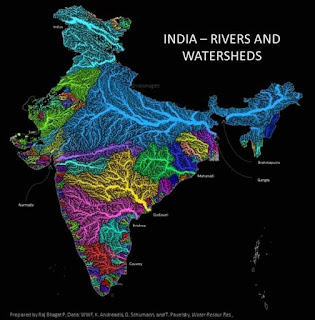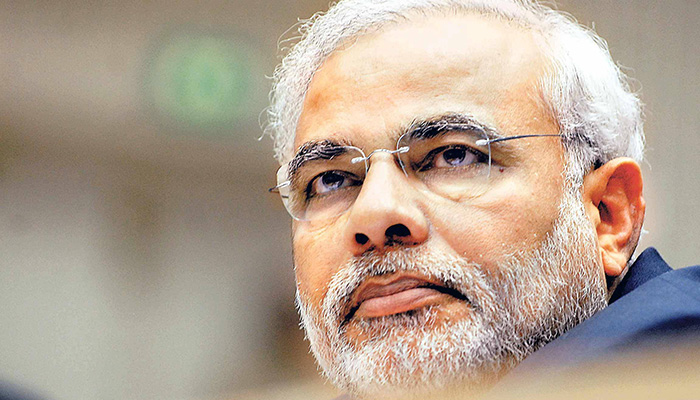Indian Rivers and Water Resources
Rivers !
They are the veins, arteries and capillaries of Bharatiya Dharmic civilization, even before the nation India is formed. They are the bloodlines that shaped Bharatavarsha and enabled the ancient Rshis like Marichi, Atri, Bhrgu, Angiras, Pulaha, Pulastya and Kratu to discover the cosmic system of living vuz. Sanatana Dharma. This discovery the passed on through Vasistha, Agastya, Parasara, Vyasa and Valmiki to reach us through their works called the Mahabharata, Ramayana and the Puranas.
Ganga with Yamuna forms the largest river network of Bharata as seen in the map with light blue color. The Ikshwakus at Sarayu central to Ramayana and the Bharatas at Ganga-Yamuna central to the Mahabharata both are from the Ganga river network. This network contains almost 70% of all kingdoms mentioned in the Mahabharata and Ramayana like Kuru, Panchala, Kashi, Kosala, Videha, Malla, Magadha, Anga, Vanga, Pundra, Suhma, Lauhiti, Dasarna, Chedi, Karusha, Matsya, Kunti, Avanti and many others.
In yellow color in the we then have the 2nd largest river network of Godavari and the 3rd largest Krishnaveni sustaining the Vanaras at Kishkindha and Rakshasas at Janasthana described in the Ramayana. It watered the Dandakaranya surrounding it on all sides and Vidarbha to its north west.
To its south are numerous rivers with Penneru, Swarnamukhi and Palar rivers among them watering the Dravida desha.
To it south is Kaveri shown in red, the cradle of Chola, Pandya, Chera culture with its Itihasas Silappatikaram and Manimekalai. To its south is Vaigai the lifeline river of the Pandyas
Small rivers of Kerala like Pampa, Periyar, Nila defines its culture with a micro diversity second only to Bharatavarsha.
To its north upto Narmada are similar western flowing small rivers watering the Gomantaka, Konkana, Malavana lands.
Narmada river networks shown in purple color gave rise to the most ancient culture with oldest cave art depicting domestication of horses. Hehaya with its capital Mahishmiti lies here. To its south in bright light blue (cyan) is shown Tapati. Surrounding these rivers were Shurparaka, Anupa, Balirashtra, Surashtra and Pansurashtra, Navarashtra deshas.
To the eastern shore in green is Mahanadi and to the north of it Suvarnarekha and Vaitarani defining the Kalinga Desha. To its north east is Brahmaputra known as Lauhitya in the Itihasa Puranas which the Indo-Gangatic Nagas adopted as their home land.
To the west shown in Green is the domain of Sarasvati which gave us the four Vedas, though lost, today survived by its tributaries and sweet water underground which still nourishes the people in the desert. Close to its mouth lied Dwaraka, Prabhasa, Kaccha and Anarta deshas.
To its west and north is river Sindhu and its tributaries Vipasha (Beas), Satadru (Satluj), Chandrabhaga (Chenab), Iravati (Ravi), Vitasta (Jhelum) the cradle of Aditya, Daitya, Danavas. There lies the Bahlika, Salva, Madra, Kekaya, Gandhara, Kamboja, Kashmira, Loha, Rishika, Ambasta, Panchanada, Sindhu, Sauvira, Sivi, kingdoms.
Sindhu with its 5 tributaries in the west, Sarasvati at the center, Yamuna with Ganga in the east and Narmada in the south defines the largest and the oldest civilization known by the names of IVC, SSC and Harappan, which is but self same as the Veda, Itihasa, Puranic civilization.
- Jijith Nadumuri



Comments